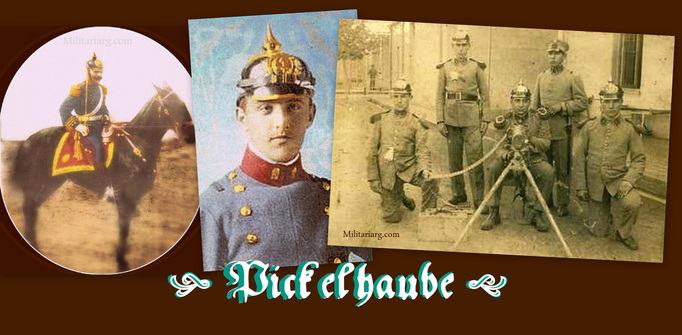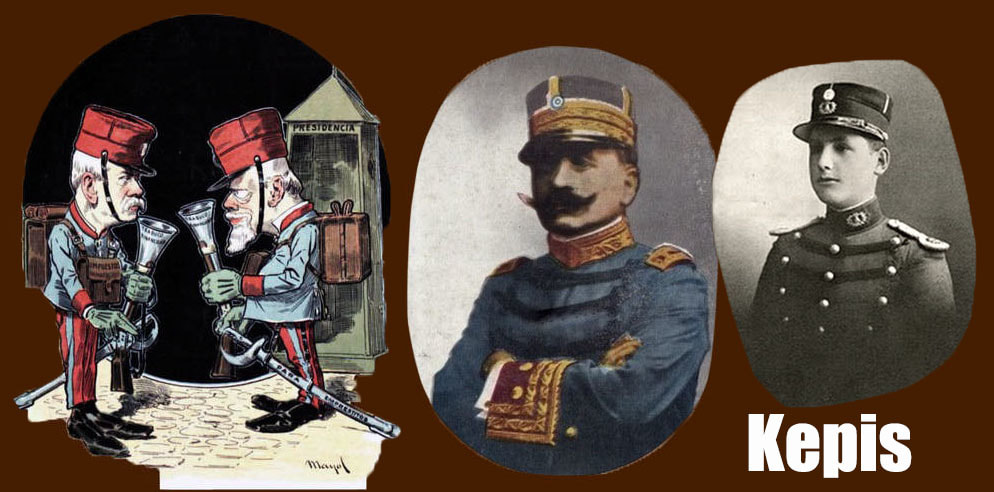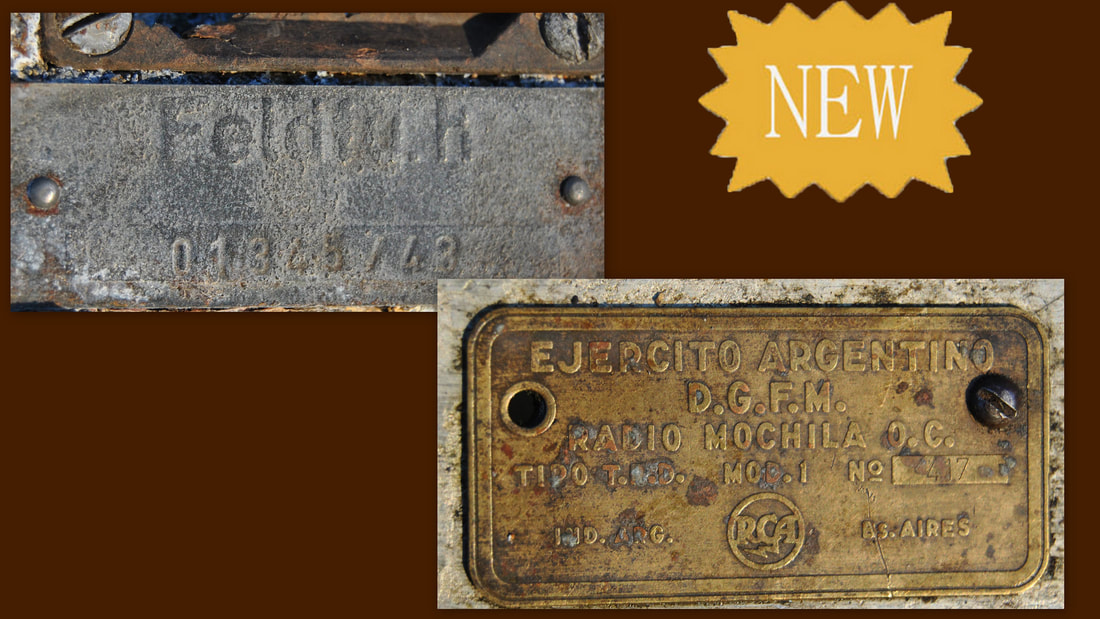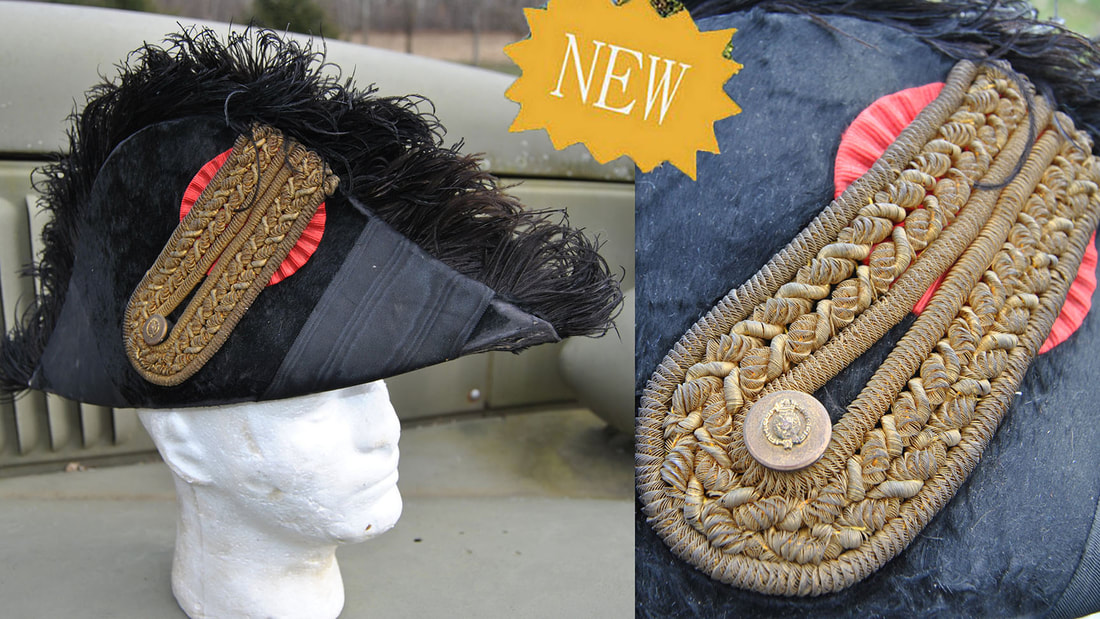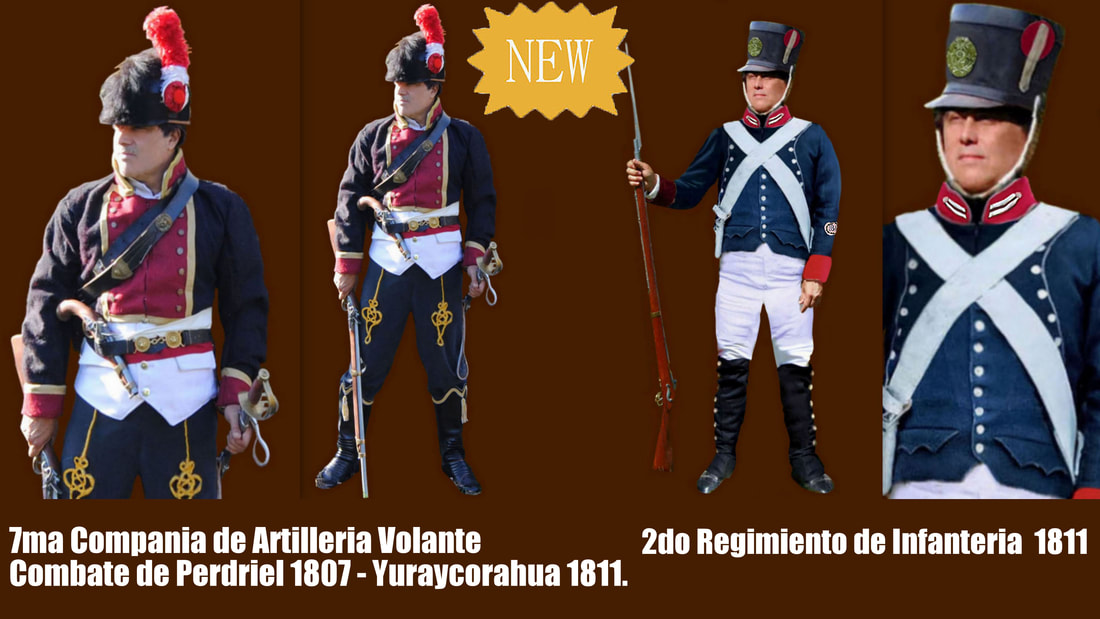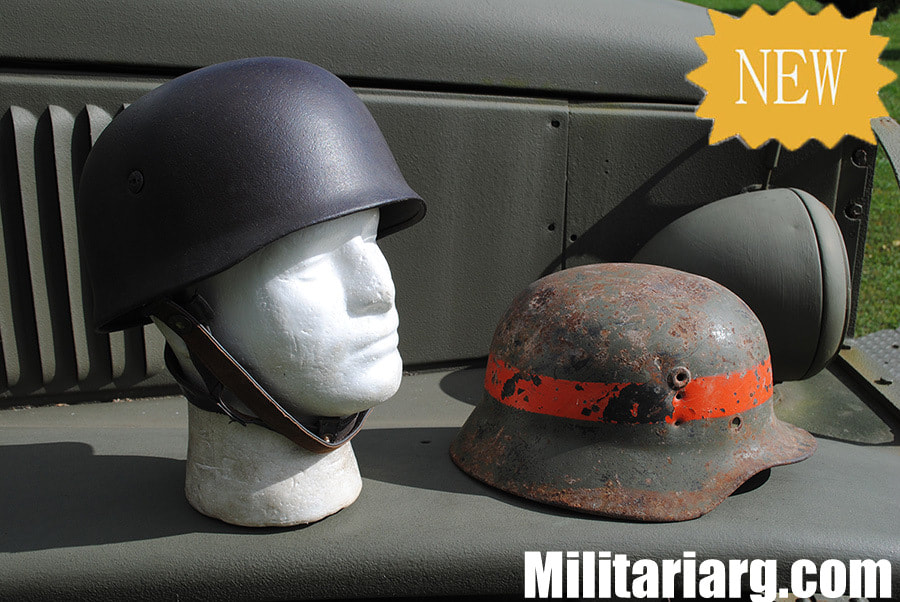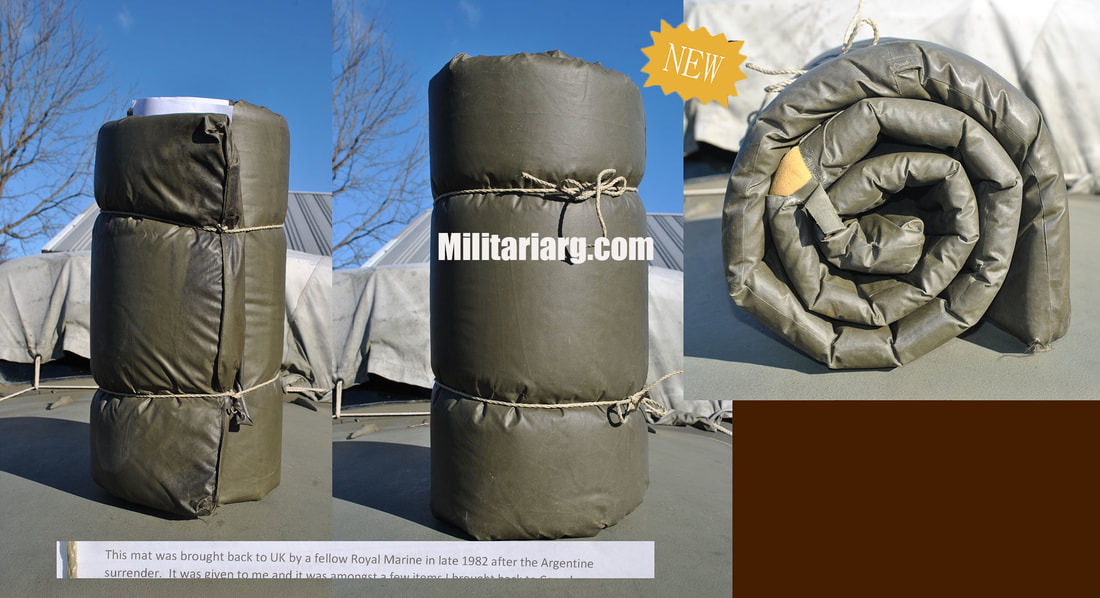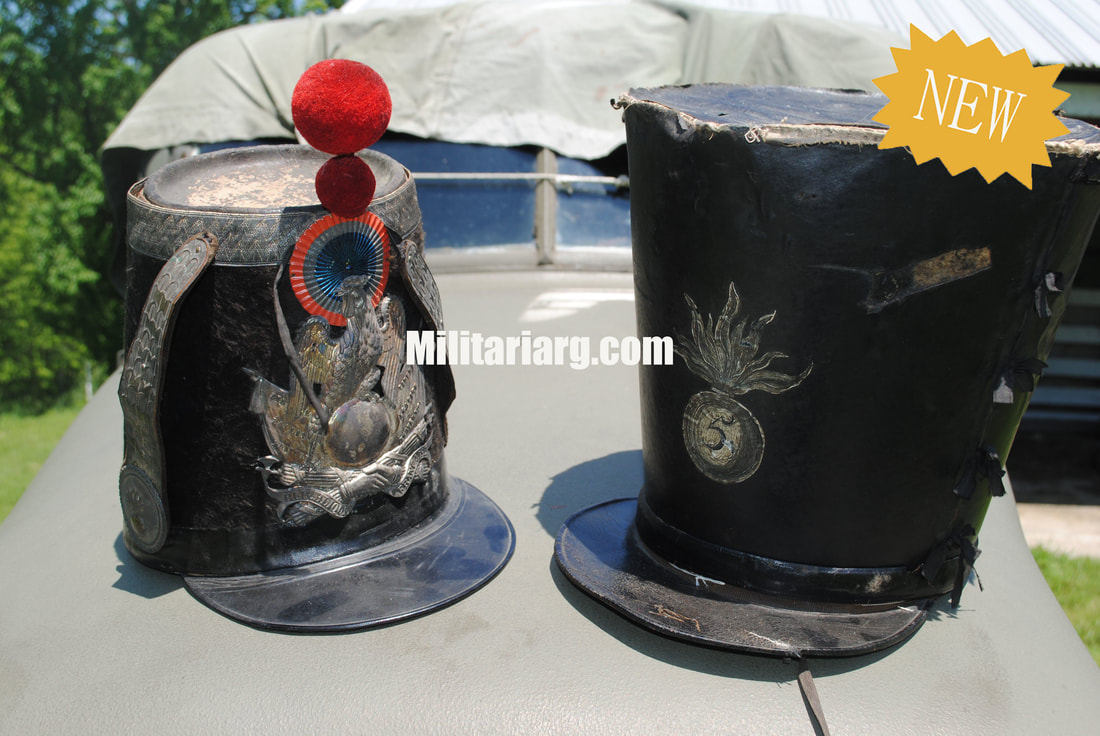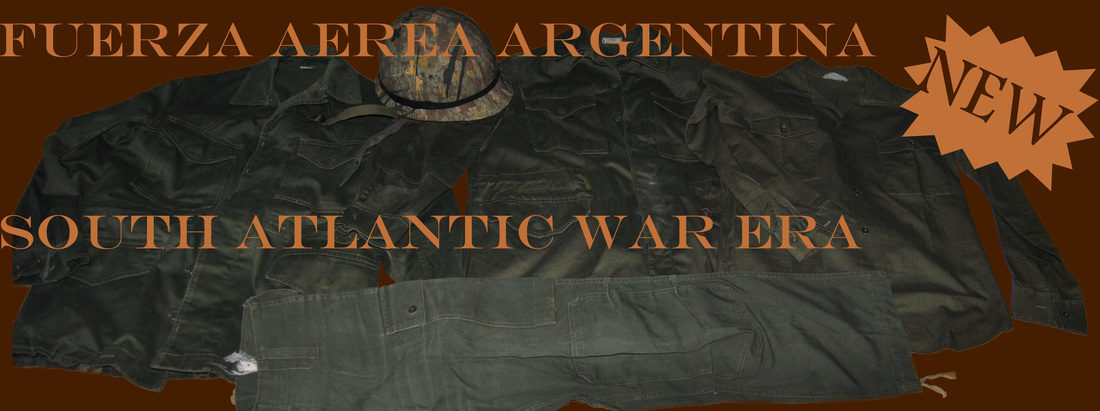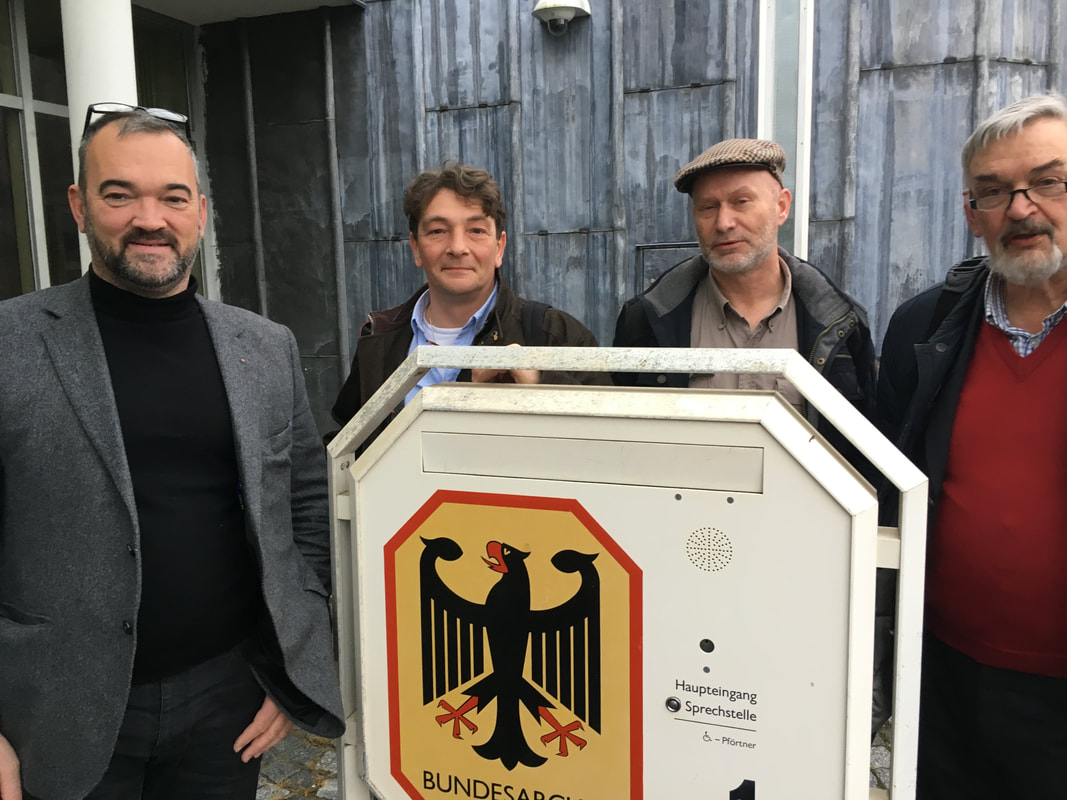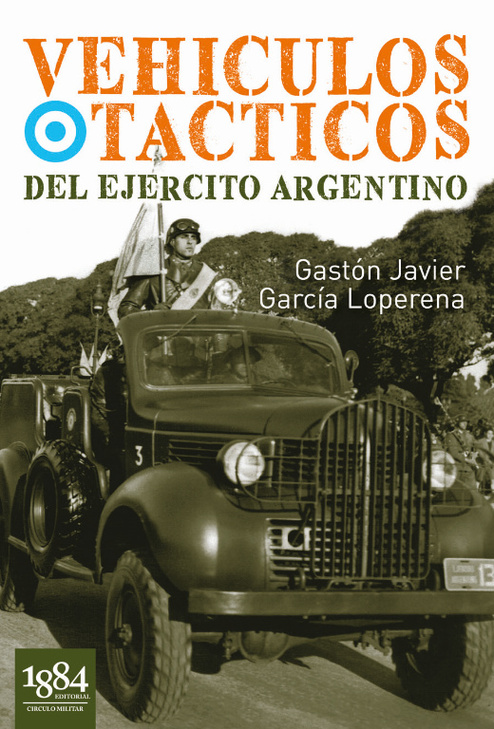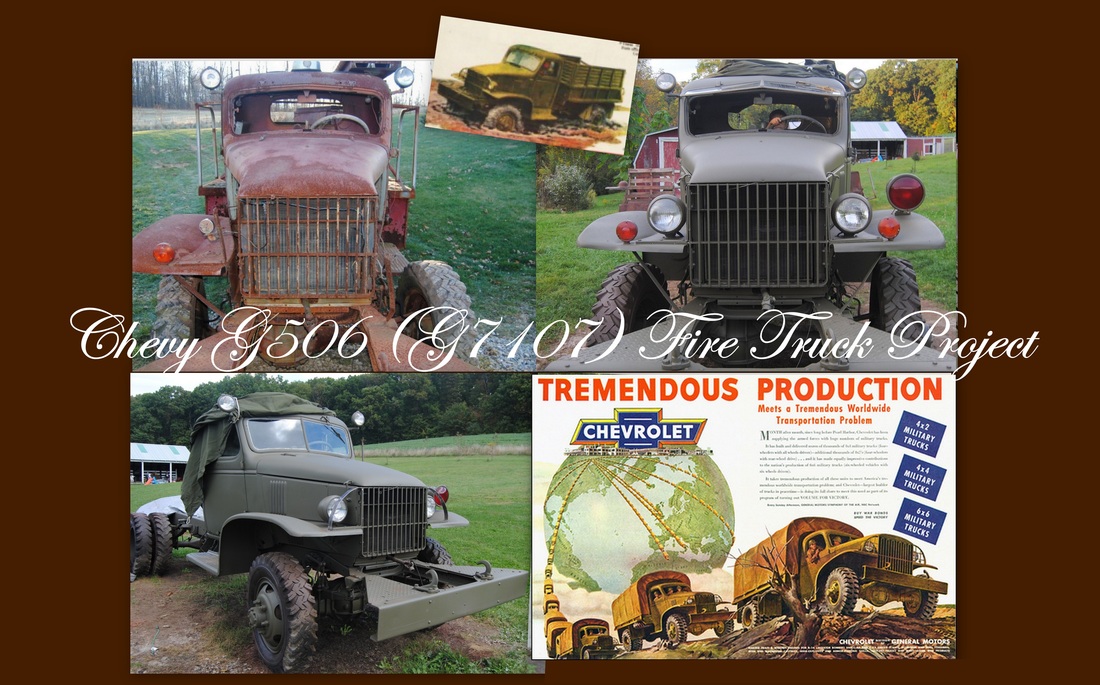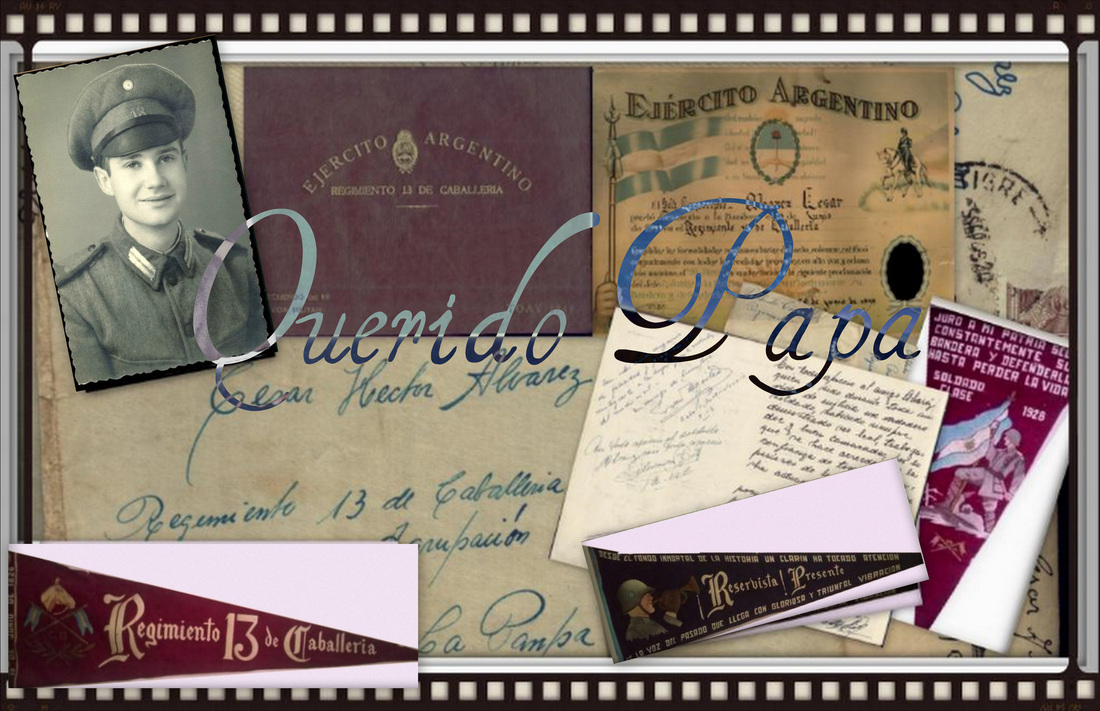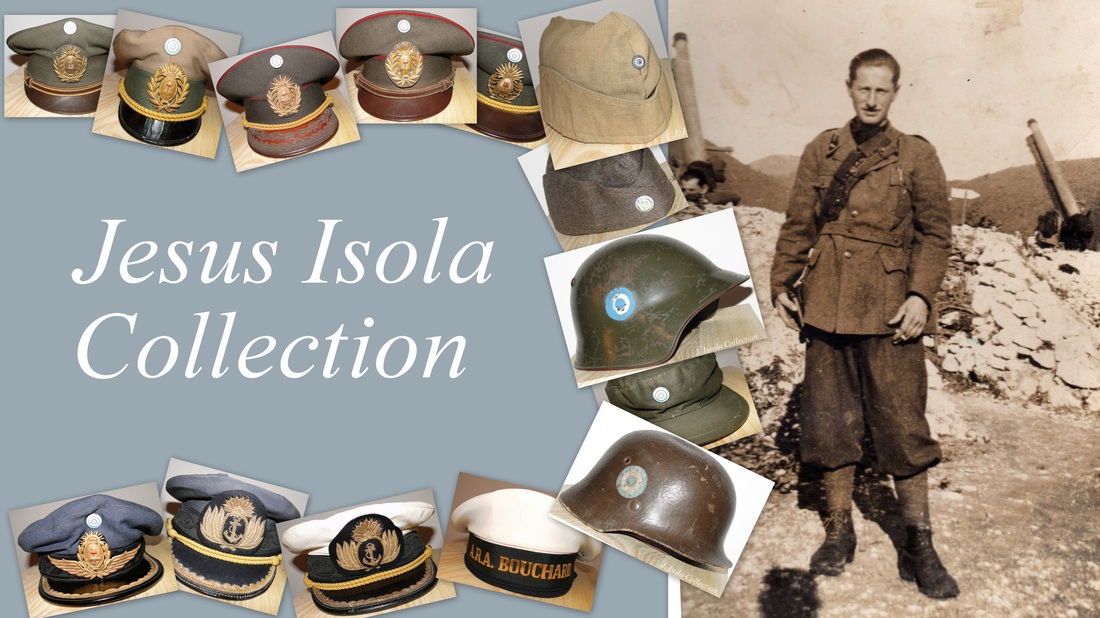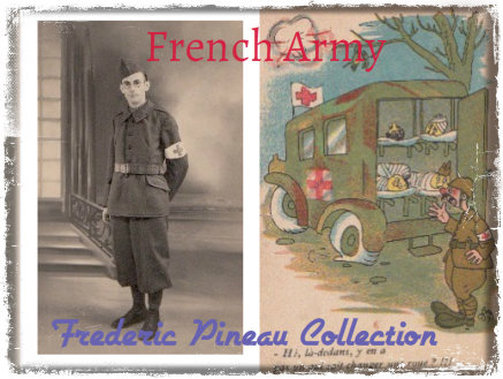Militariarg is a website for international militaria and collecting with an emphasis on Argentine militaria from the period between world wars, although we have information from other time periods. We have references to uniforms, equipment, pictures, medals and memorabilia, et cetera.
We intend to create a humble general reference source on Argentine militaria. A uniform guide and identification index based on vintage photographs, pictures and material can be used for that purpose.
The site is purely historical and recreational with no political affiliation whatsoever. Our only aim is to unite collectors through the passion of history and militaria.
We hope that it will be especially useful to those who are just starting to collect or who are founding reenactment groups with their friends. With that in mind we tried to make this site as simple and friendly as possible.
While it is somewhat difficult to get original material of the era, there are elements on the market that can be used as substitutes for gendarmes, horse grenadiers, patricios, cavalry, infantry, artillery, skiers, Chasseurs of the Andes, climbers, mountain troops, marines, paratroopers, armored vehicle crews, hussars, engineers, etc. from the period between wars and especially WWII.
The same can be done with some military vehicles through restoration,
reproductions and replicas of weapons. We also hope that those subject
matter experts can help with data so that this space continues to grow and,
above all, enhance the data. While we know Argentina has remained neutral
following the tradition of non-belligerency, it had a well-structured
military machine, though compact with respect to the standards of the European countries whose styles and techniques it had copied. It had even purchased equipment from the varied countries. We hope that this will serve as a guide for those who have military items of both Argentine and international origins.
This site will be evolving as we add more information so keep checking back.
Thank you very much.
In this new section of the blog we will show the different models of firefighter helmets of the 19th century and early 20th century. In the case of the French firefighter helmets, they are considered part of the militaria collection since the fire brigades from the first Empire, the Monarchy of July, the Second Empire until early in the Third Republic, belonged to the Imperial Guard and its successor the French National Guard. For this reason the firemen used weapons and military uniforms. Their helmets were derived from the Model 1810 of Engineers of the Imperial Guard and varied their characteristics over time and their prolonged use in service. With regard to the 19th century firefighters of Argentina, military uniforms and rifles are in use. Also these French models are seen in old photographs and antique shops or flea markets, such as model 1855 and 1885. There may have been more variants.
In this section of the web is a collection of flight helmets. This page will be updated with the new material and helmets.
Section of the blog dedicated to the study and research of uniforms and militaria in general during a time that is as fascinating as it is unknown.
This new section of the blog will be exclusively for militaria from 1852 (Battle of Caseros) until 1910, when the pickelhaube started the Prussian style in some uniforms. The theme will focus on identifying the exact model of uniforms, taking into account that these clothes came directly from the French tailors, from the Second Empire to the Third Republic, and find those models in the militaria market to compare them with old photographs and portraits.
MILITARIA COLLECTION, NEW ITEMS:
WW2 WD20 M20 Motorcycle.
WW2 German radio Feld.Fu H relic parts and WW2 era, Argentine Army D.G.F.M OC Type TRD Radio parts.
Spain Spanish bicorne hat from the diplomatic uniform. Alfonso XII era.
1807 - 1809. King's 1st Buenos Aires Hussar Squadron (Husares de Pueyrredon).
7th Light Artillery Company (Artilleria Volante). 1807 Combat of Perdriel - British invasions of the Rio de la Plata and War of Independence against Spain.
2nd Infantry Regiment 1809 - 1911 (War of Independence).
War Against the Empire of Brazil 1825 - 1828. Coracero de Buenos Aires General Lavalle Cuirassier.
Cazadores de los Andes 1820 - Chasseur à Cheval Andin - Horse Mounted Andean Hunter. Independence War.
1817 Cazadores a Caballo - Custody of General San Martin - Ejercito de los Andes.
Granaderos A Caballo del General San Martin - Cruce de los Andes 1816 - 1917
Horse Mounted Grenadier - Andean Army, Crossing of the Andes.
Corsican 2eme Bataillon Chasseur Corses Royaux. 1791-1794. Early Napoleonic Wars. Amry of the Alps.
French Staff Officer - Etat Major des Places - Argelie - Crimean - Italian Independence - Mexican - French Prussian War Era.
A real treasure; This is a 1930 field holster for carrying instruction books for the Schneider Mountain 10.5cm 105mm Howitzer. Argentine Model 1928. It also has hand notes of the person in charge of piece number 14.
Peron Era, Argentine visor hat from the 1940 Gala Uniform, in use until 1944. The color of the 1940's officers' dress uniform was blue-gray. This uniform stopped being used in the Army but it was adopted by the nascent Argentine Air Force since then.
Soviet Navy, dated 1950 (Peron era) Courtesy Flag. The interesting thing about this flag is its color, a darker blue than the usual light blue. It is also well worn and sewn in a few spots where it had ripped. I do not know the name of the ship(s) that used it.
Original German Paratrooper (Fallschirmjager) Helmet ET68 and Post War M40 Afghan Helmet Shell "Q64" Quist Factory.
Left: RAF MK.1A "Bone Dome" Flying Helmet. Ex SAAF (South African Air Force). The shell belonged to a South African pilot, veteran of WWII who continued his career in the SAAF in the postwar. This type of helmet was used in the RAF from 1950-60s, in aicraft such as Gloster Javelin, Hawker Hunter, etc. The RAF oxygen mask is an A13A/2 model, used in everything from Hunter to Vulcans. The blue inner cloth is a type "G".
Right: FAA Argentine Air Force (US Made), from the Falklands/Malvinas War Era. This type of flying helmet was used in Pucara and A4 Skyhawk, but most common in the FMA IA 58 Pucara.
Model 1910. Argentine Army Epaulettes.
Reproduction: Model 1829, Argentine Governor or Captain of the Militias Jacket.
Reproduction Argentine Army High Officer Epaulettes Model 1810 - 1852.
1930s FROG Interceptor Mark IV Argentine EAM.
New item. Argentine Army -Comandos 601 602, sleeping mat.
Circa 1810. French Sword of superior officer of the First Empire and French officer cavalry buckles 1st Empire to 2st Empire. Above left the uniform of an aide-de-camp (Colonel Pedro Ramos) of the Argentine Confederation. On the right, Colonel Pedro Ramos. Photo Revisionistas.
New photos. Beautiful photograph of the 9th Line Cavalry Regiment in the Province of Mendoza (Andean mountain area). The photo picture was found in a "Magic Lantern" and is from after 1904 when the 9th had already been replaced in its function as the Presidential Escort by the 8th Cavalry Regiment. It is currently called the "Cavalry Regiment of Tanks 9, General José Gervasio Artigas". This Regiment was born in 1826, having as its first commander the then Lieutenant Colonel Manuel Oribe. This unit currently uses SK-105 "Kürassier" tanks.
Peruvian Army jacket model 1905, (French pattern model 1893/1910) for a Dragoon Colonel (Presidential Escort Regiment). This model is contemporary to Colonel Roque Saenz Peña, (he was promoted to Colonel of the Peruvian Army in 1885 and later promoted by the Peruvian Congress in 1905 as Army Brigadier General), and the military mission of Peru to Paris in 1898. The original model 1893 came with a straight line of seven buttons, but after 1910, it came modified with 9 buttons, like this specimen in the picture.
Beautiful dolman of the French model 1872, widely used in Argentina from the end of the 19th century until the beginning of the 20th century in the infantry, the cavalry and especially in the Military School of the Nation. This jacket in particular belonged to Regiment 20, the French artillery train from the Third Republic to the early days of WWI. The pith helmet that I used to decorate the photo is also a French colonial model 1886 with artillery insignia model 1872, but ex-Argentine Army between 1880 and the early 1900s.
Jacket model 1867 of the French line infantry, used in times of the third republic. In Argentina, during "the belle epoque", the model 1867 was used by the army, the navy, the police, and its fire department along with the French jacket model 1880 towards the end of the 19th century and the beginning of the 20th.
Model 1872 Uniform: French Chasseur a Cheval d'Afrique in a French "Gris Argentin" color and red trousers.
Model 1872 - 1874 French Dragoon and Cuirassier Helmet.
Beautiful Argentina made, Uruguayan Army helmet for Cuirassier. It is the same aluminum helmet used by the Argentine Cavalry around the 1940s. On the right you see another interesting item. It is a WWII German helmet M35 from the Wehrmacht, recycled in the 50s as a kitchen strainer.
CZ 20 Czech Helmet lightweight version, the material with which it is made seems to be a kind of vulkanfiber or bakelite. Factory Marker HSH "Nase Vojsko" acquired in Czechoslovakia. On the right a Argentine Cavalry Officer type 1860 Pickelhaube, acquired in England.
Model 1910, Argentine Pickelhaube and Grenadier Shako.
19th Century, original dolman of the Trompette Trumpet Major from the Chasseur a Cheval or 4ème / 4th Hussars French Regiment. It was acquired in the Czech Republic. On the right in the picture, the same dolman with a pelisse from the same unit, but with a different rank. Colbac in the picture is a reproduction.
French Garde Nationale Model 1837 and 1830 Shako.
New Book: Mercedes-Benz G en el Ejercito Argentino" The Mercedes-Benz G in the Argentine Army by Gaston Garcia Loperena
Around 1968, the Argentine Army started the replacement of its "Canadian" trucks dating from the Second World War, with the new Mercedes-Benz UNIMOG. Little more than a decade later, this renewal led to a new lightweight vehicle, the traditional Jeep, which had served so well through the years in a noble and consistent manner. It looked for a successor that, according to the times, will have better habitability, greater load capacity and superior performance in all terrain.To this end, a series of comparative tests were carried out with samples from different origins. A new model, the Mercedes-Benz G, was crowned triumphant and would be incorporated in 1981.
This work, unknown in most of the world, written in Spanish on this timeless emblem of Mercedes-Benz, not only tells the story of the joint marks that gave rise to it, but also its development process, its selection by the army and the details of all the variants used, with the contribution of more than 250 photographs, charts and diagrams. It is a meticulous and solidly documented work. This book is, in short, a well-deserved tribute to the G model and its participation in the Army.
This work, unknown in most of the world, written in Spanish on this timeless emblem of Mercedes-Benz, not only tells the story of the joint marks that gave rise to it, but also its development process, its selection by the army and the details of all the variants used, with the contribution of more than 250 photographs, charts and diagrams. It is a meticulous and solidly documented work. This book is, in short, a well-deserved tribute to the G model and its participation in the Army.
1940s. Argentine Army. Horse, leather halter collar head.
1930/60s. Antique Rossi Caruso & Co Argentina Officers Military Field Saddle
1960s Argentine M38 (M18 Swiss) Helmet.
British Wireless Sets No. 19 - MK III and AC Power Supply for the WIRELESS SET 19 (Canadian "Lend Lease")
British WS-19 - MK II and MkII AC Power Supply (Canadian) and Aerial Antenna base, M4 Sherman Tank.
STG 44 7.92x33mm dummy rounds set.
This is an absolutely wonderful lot. It came from Argentina; South-Atlantic-War-Era items of the Argentina Air Force troops, one of them from a veteran. These 80s items are really difficult to find.
Incredible find from Argentina!! A very heavy, almost complete box with accessories and replacements. It is from the famous mountain gun Schneider Model 1928 75mm.
Argentine Cavalry Sword (Troops), 1898 Modelo Argentino. Made by Weyersberg kirschbaum & co Solingen.
(WWII and 1982 South-Atlantic-War Era): MK2 Argentine Navy Talker Helmet and 1981 Argentine Marines Infantry Visor Hat.
Presentation ceremony at Castelvecchio Subequo in memory of a Major Corporal, 9th Alpini Regiment Battalion L'Aquila Division Julia. Fallen in combat in 1943, WWII Eastern Front. His identification plate "dog tag"was found in Russia in relic state and returned to his family and his hometown in Italy through this website.
New Book: The Eye of the Flak - Das Auge der Flak
by Dr. Peter De Laet and Francis Vermeire
Volume I of "The Eye of the Flak - Das Auge der Flak" by Dr. Peter De Laet and Francis Vermeire.
The first part of a trilogy on German World War II Flak optics with emphasis on the 10 x 80 45° Flakfernrohr. In volume I the authors have approached the world's most produced high aperture military binocular from both its historical and functional perspective, in an attempt to give the 10 x 80 its rightful place in optical and military history. This work is the result of 10 years of research by the authors.
Click above to access the book's website.
The first part of a trilogy on German World War II Flak optics with emphasis on the 10 x 80 45° Flakfernrohr. In volume I the authors have approached the world's most produced high aperture military binocular from both its historical and functional perspective, in an attempt to give the 10 x 80 its rightful place in optical and military history. This work is the result of 10 years of research by the authors.
Click above to access the book's website.
Volume I of "The Eye of the Flak - Das Auge der Flak" by Dr. Peter De Laet and Francis Vermeire. The authors are currently working on Volume II.
New Book: U.S. M3/M3A1 Submachine Gun "Grease Gun" by Michael Heidler
Excellent book on the M3/M3A1, with many illustrations; It includes its variants like the PAM-1/2 from Argentina.
New Book: El UNIMOG en el Ejercito Argentino" The UNIMOG in the Argentine Army by Gaston Garcia Loperena
In 1967, a mission of the Argentine Army travelled to Europe to evaluate and acquire new materials. After passing through several countries closing deals, they arrived in Germany to visit the Daimler-Benz company.
There, they could witness en situ an off-road truck with a very particular silhouette and characteristics. Upon seeing its amazing capacity, the members of the mission had no doubts that no comparable vehicles or better known solution existed, and decided to immediately adopt it. Within a few months, as part of the "Plan Europa" and from the Argentine Mercedes-Benz plant, in the outskirts of the city of Buenos Aires, the first units of national manufacturing came rolling off the assembly line.
Once in Army service and with the passing of the years, adapting to innumerable uses but keeping all of its virtues intact, the new model transformed into a legendary and exceptional vehicle, as its name: UNIMOG.
"Paperback, 320 pages, 292 black and white and color photographs"
Tactical Vehicles of The Argentine Army by Gastón Javier García Loperena
Throughout its history, the Argentine Army has been characterized by its equipment. Tactical wheel vehicles were no exception and, gradually, from the first decades of the last century, they began to incorporate special purpose units for all types of terrain. With the passage of time, the endowment grew increasingly better and more sophisticated models of astonishing variety.
In this book, the first of its kind, you will find a detailed work on the history of different "campaign vehicles" that motorized the Argentine Army through a century.
The development, technical specifications and use within the Force, accompanied by a large number of unpublished and original photographs show the reader unfamiliar facets of these unique vehicles.
This work is, in short, an exciting journey through the fascinating history.
In this book, the first of its kind, you will find a detailed work on the history of different "campaign vehicles" that motorized the Argentine Army through a century.
The development, technical specifications and use within the Force, accompanied by a large number of unpublished and original photographs show the reader unfamiliar facets of these unique vehicles.
This work is, in short, an exciting journey through the fascinating history.
Gruesocalibre ("High-Caliber") is s Heavy Metal band from Argentina. They are working on a song dedicated to the Nahuel tank DL43, Prime Medium Tank manufactured in Latin America and of which no plans remain, not even a single screw. Its manufacture was a great effort by the Argentine people where state and private enterprises were pooled to give the tank tp the country in times of geopolitical isolation because of the neutrality of WWII. This mass of steel is an icon of Argentine Industry to which they dedicate the song.
History of The Band: Gruesocalibre was formed in May 2005 in the City of Arroyo Seco (Santa Fe), with German Dovidio on vocals and bass, Leonardo Gonzalez on guitar and Jesus Isola on drums, in early 2006 Alexis Gonzalez joined as singer. On Saturday March 31, 2007 GRUESOCALIBRE Romance debuted at Disco Bar of the City of Arroyo Seco.
The July 21, 2007 the band began recording their first album in the studio Venus Records in the city of Rosario. The album is called A Day and has 6 more issues: Bolota, Independence Boulevard, Cimarron, I'm Not Leaving, One Day More and Another Linye in the City.
Gruesocalibre is still together today with German Dovidio on Bass and Vocals, Guitar and Leonardo Gonzales in Jesus Isola on drums.
Click on the image above to go to the band's website.
History of The Band: Gruesocalibre was formed in May 2005 in the City of Arroyo Seco (Santa Fe), with German Dovidio on vocals and bass, Leonardo Gonzalez on guitar and Jesus Isola on drums, in early 2006 Alexis Gonzalez joined as singer. On Saturday March 31, 2007 GRUESOCALIBRE Romance debuted at Disco Bar of the City of Arroyo Seco.
The July 21, 2007 the band began recording their first album in the studio Venus Records in the city of Rosario. The album is called A Day and has 6 more issues: Bolota, Independence Boulevard, Cimarron, I'm Not Leaving, One Day More and Another Linye in the City.
Gruesocalibre is still together today with German Dovidio on Bass and Vocals, Guitar and Leonardo Gonzales in Jesus Isola on drums.
Click on the image above to go to the band's website.
CRSL Collectibles, Uruguayan and South American Militaria













